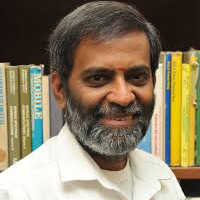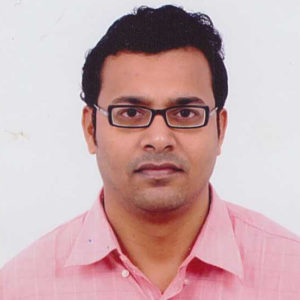T10: OTFS Modulation for Robust Wireless Communication in Next Generation High Mobility Scenarios: From Invention to Practice
Organizer: Ronny Hadani, University of Texas at Austin, USA
Organizer: Ananthanarayanan Chockalingam, Indian Institute of Science, India
Organizer: Saif Khan Mohammed, Indian Institute of Technology Delhi, India
Abstract: The recently introduced Orthogonal Time Frequency Space (OTFS) modulation has been shown to be significantly robust to mobility induced Doppler spread when compared to multi-carrier modulation, which makes OTFS a key waveform candidate for high mobility scenarios in next generation wireless communication systems. This tutorial by the inventor of OTFS modulation and leading researchers, aims to introduce the audience to recent new results on OTFS modulation which would enable its practical deployment in next generation high mobility use cases like V2X, high-speed-train, UAV/Drones and also in mm-wave communication systems where mobility induced Doppler spread is high due to high carrier frequency. OTFS modulation multiplexes the information symbols in the delay-Doppler (DD) domain, whereas multi-carrier modulation schemes multiplex symbols in the time-frequency domain. The main advantage of multiplexing information symbols in the DD domain is that even in rapidly time-varying channels, the effective DD domain wireless channel exhibits slow variations and is sparse. Slow variations reduce the channel estimation overhead in rapidly time-varying channels and the sparse nature of the effective DD domain channel allows for low-complexity joint demodulation of all information symbols multiplexed in the DD domain. Joint demodulation helps in achieving robustness towards mobility induced Doppler spread. The key objectives of this tutorial are to introduce OTFS modulation, highlight the theory behind OTFS waveform design in the DD domain, present algorithms for signal detection, channel estimation and multiuser communication in the DD domain, and explain the reason behind the superior performance of OTFS compared to OFDM in high-mobility scenarios.
Bio: Ronny Hadani serves as the Chief Science Officer at Cohere Technologies. He also serves as an associate professor in the Mathematics Department of the University of Texas at Austin. Before that, he was a Dickson postdoctoral fellow in the Mathematics Department of the University of Chicago. He holds a PhD in pure mathematics from Tel-Aviv University and a master’s degree in applied mathematics from The Weizmann Institute of Science in Israel. His field of expertise is representation theory, harmonic analysis, and signal processing.

Bio: A. Chockalingam (S’92–M’93–SM’98) received the B.E. (Hons.) degree in electronics and communication engineering from the P. S. G. College of Technology, Coimbatore, India, in 1984, the M.Tech. degree in electronics and electrical communications engineering (with specialization in satellite communications) from the Indian Institute of Technology, Kharagpur, India, in 1985, and the Ph.D. degree in electrical communication engineering (ECE) from the Indian Institute of Science (IISc), Bengaluru, India, in 1993. From 1986 to 1993, he was at the Transmission R&D Division, Indian Telephone Industries Limited, Bengaluru. From 1993 to 1996, he was a Post- Doctoral Fellow and an Assistant Project Scientist at the Department of Electrical and Computer Engineering, University of California at San Diego. From 1996 to 1998, he was at Qualcomm, Inc., San Diego, CA, USA, as the Staff Engineer/Manager of the Systems Engineering Group. In 1998, he joined the faculty of the Department of ECE, IISc, where he is currently a Professor, working in wireless communications and networking. He is a fellow of the Indian National Academy of Engineering; the National Academy of Sciences, India; the Indian National Science Academy; and the Indian Academy of Sciences. He is a recipient of the Swarnajayanti Fellowship from the Department of Science and Technology, Government of India. He has served as an Associate Editor for the IEEE TRANSACTIONS ON VEHICULAR TECHNOLOGY, and as an Editor for the IEEE TRANSACTIONS ON WIRELESS COMMUNICATIONS. He has served as a Guest Editor for the IEEE JOURNAL ON SELECTED AREAS IN COMMUNICATIONS (Special Issue on Multiuser Detection for Advanced Communication Systems and Networks), and for the IEEE JOURNAL OF SELECTED TOPICS IN SIGNAL PROCESSING (Special Issue on Soft Detection on Wireless Transmission). He is an author of the book on ‘Large MIMO Systems’ published by Cambridge University Press.

Bio: Saif Khan Mohammed (Senior Member, IEEE) is currently an Associate Professor with the Department of Electrical Engineering, Indian Institute of Technology Delhi (IIT Delhi). His main research interests include wireless communication using large antenna arrays, coding and signal processing for wireless communication systems, information theory, and statistical signal processing. He currently serves as an Editor for IEEE TRANSACTIONS ON WIRELESS COMMUNICATIONS and has served as an Editor for IEEE WIRELESS COMMUNICATIONS LETTERS and Physical Communication journal (Elsevier). He received the B.Tech. degree in computer science and engineering from IIT Delhi, New Delhi, India, in 1998, and the Ph.D. degree from the Electrical and Communication Engineering Department, Indian Institute of Science, Bangalore, India, in 2010. From 2000 to 2003, he was with Ishoni Networks, Inc., Santa Clara, CA, USA, as a Senior Chip Architecture Engineer. He was a Systems and Algorithm Designer with the Wireless Systems Group, Texas Instruments, Bangalore, India, from 2003 to 2007. From 2010 to 2011, he was a Post-Doctoral Researcher at Commsys. He was an Assistant Professor with the Communication Systems Division (Commsys), Electrical Engineering Department (ISY), Linkoping University, Sweden, from September 2011 to February 2013. He holds four granted U.S. patents in multi-user detection and precoding for multiple-input multiple-output (MIMO) communication systems. He received the 2017 NASI Scopus Young Scientist Award and the Teaching Excellence Award at IIT Delhi for the year 2016–2017. He was also a recipient of the Visvesvaraya Young Faculty Fellowship from the Ministry of Electronics and IT, Government of India, from 2016 to 2019, and the Young Indian Researcher Fellowship from the Italian Ministry of University and Research (MIUR) from 2009 to 2010. He holds the Prof. Kishan Gupta and Prof. Pramila Gupta Chair at IIT Delhi. He is also a fellow of the Institution of Electronics and Telecommunication Engineers, India.
